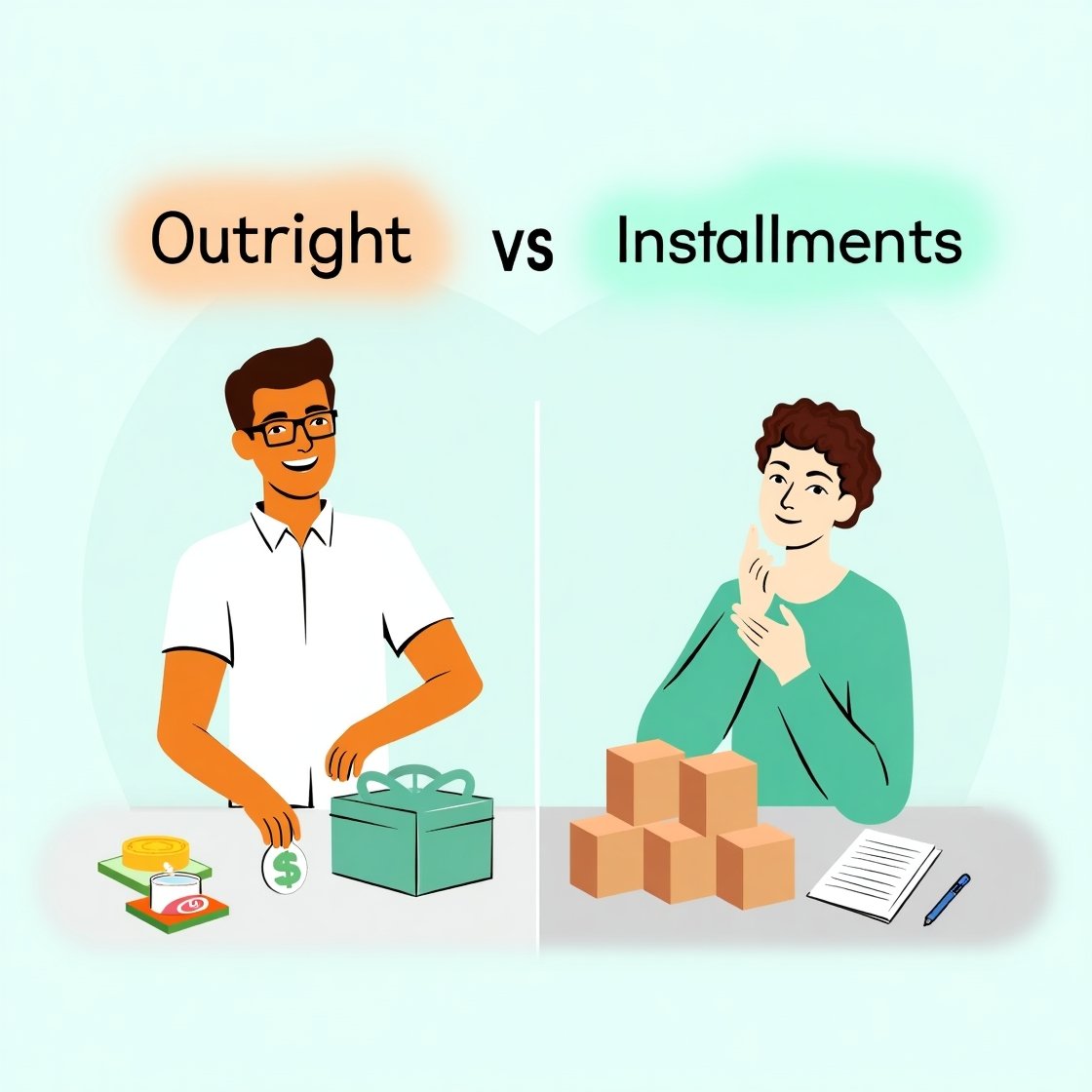Smart Consumption 3
budgeting tips, conscious spending, cut back on expenses, decluttering finances, financial freedom, financial goals, financial minimalism, intentional spending, live better, mindful spending, minimalism and happiness, minimalist lifestyle, minimalist living, money management, personal finance tips, reduce expenses, reduce financial stress, saving and investing, saving money, simplify finances, spend less
Tayrine Campos
5 months ago
0 Comments
Financial Minimalism: How to Spend Less and Live Better 2025
In today’s fast-paced world, it’s easy to get caught up in the cycle of overspending. Consumer culture encourages us to acquire more, upgrade frequently, and keep up with the latest trends. But what if we chose to live differently? What if, instead of constantly accumulating, we focused on owning less and spending less to improve our quality of life? This is the essence of financial minimalism.
Financial minimalism is about being intentional with your money, reducing unnecessary spending, and focusing on what truly adds value to your life. It’s not about depriving yourself or living with nothing—it’s about making mindful choices that allow you to spend less, save more, and live better. In this guide, we’ll explore the principles of financial minimalism and how to implement them in your daily life.
What is Financial Minimalism?
At its core, financial minimalism is the practice of simplifying your financial life by focusing on the essentials and cutting out unnecessary expenses. It involves living with intention, avoiding impulsive purchases, and aligning your spending with your values and long-term goals.
The goal of financial minimalism isn’t just to save money—it’s to create a lifestyle that’s more fulfilling, less stressful, and more aligned with your personal values. By being more mindful about your finances, you can free up more time and energy to focus on what truly matters, such as relationships, personal growth, and experiences.
Keyword focus – financial minimalism, spend less, live better, intentional spending
The Benefits of Financial Minimalism
Financial minimalism offers a range of benefits that go beyond just saving money. Here are a few reasons why adopting this lifestyle can improve your life:
- Reduced Stress: One of the biggest advantages of financial minimalism is reduced financial stress. By eliminating unnecessary expenses and focusing on your true needs, you can lower your financial burden and feel more in control of your money.
- Increased Savings: By spending less on non-essential items, you’ll have more money available for saving or investing. This can help you build an emergency fund, pay off debt faster, or reach your long-term financial goals more quickly.
- More Time and Energy: When you prioritize what really matters in life and stop chasing material possessions, you free up more time and energy for personal growth, hobbies, and experiences that enhance your well-being.
- Improved Relationships: Financial minimalism can lead to stronger relationships as it encourages you to focus on experiences with loved ones rather than material possessions. Simple activities, like cooking together or going on a nature walk, can foster deeper connections.
- Long-Term Financial Freedom: Over time, adopting a minimalist financial approach can help you achieve financial independence. By living below your means and making smart financial choices, you can create a foundation for a more secure and fulfilling future.
Keyword focus – benefits of financial minimalism, reducing stress, increased savings, financial freedom
How to Implement Financial Minimalism
Now that we understand what financial minimalism is and why it’s beneficial, let’s explore practical steps you can take to implement it in your own life.
1. Track Your Expenses
The first step in adopting financial minimalism is to gain a clear understanding of where your money is going. Tracking your expenses helps you identify areas where you may be overspending or making purchases that aren’t aligned with your values. Use budgeting apps like Mint or YNAB (You Need A Budget) to categorize and track your expenses. By understanding your spending habits, you can identify areas to cut back and make more intentional choices.
Keyword focus – track expenses, budgeting apps, YNAB, financial tracking
2. Simplify Your Budget
Once you’ve tracked your spending, simplify your budget by focusing on the essentials. Identify your needs (housing, food, transportation, etc.) and prioritize spending on these areas. Next, evaluate your discretionary spending—things like entertainment, dining out, and shopping—and determine where you can reduce costs.
For example, instead of subscribing to multiple streaming services, consider consolidating to one or eliminating subscriptions you don’t use. Instead of dining out several times a week, try cooking at home more often. By making small changes, you can drastically reduce your monthly expenses.
Keyword focus – simplify your budget, discretionary spending, reduce costs
3. Cut Back on Impulse Purchases
Impulse buying is one of the biggest obstacles to financial minimalism. The allure of discounts, sales, and new products can easily lead us to buy things we don’t really need. To reduce impulse spending, try implementing the following strategies:
- Wait Before You Buy: When you feel the urge to make an impulse purchase, wait at least 24 hours before buying. This gives you time to assess whether the item is truly necessary.
- Make a Shopping List: Whether you’re grocery shopping or buying clothes, create a list beforehand and stick to it. This helps you avoid unnecessary purchases.
- Unsubscribe from Marketing Emails: Retailers often use email marketing to promote sales and discounts, tempting you to buy items you don’t need. Unsubscribing from these emails can reduce the temptation to shop impulsively.
SEO Tip: Keyword focus – impulse purchases, reduce spending, shopping list, wait before you buy
4. Adopt a “One In, One Out” Rule
Another strategy to minimize clutter and unnecessary spending is the “one in, one out” rule. For every new item you purchase, commit to getting rid of one item. This helps prevent accumulation of things you don’t need and ensures that your purchases are intentional. Whether it’s clothes, gadgets, or furniture, this rule can keep your home organized and your spending in check.
Keyword focus – one in one out rule, reduce clutter, intentional purchases
5. Focus on Experiences Over Material Goods
A key principle of financial minimalism is focusing on experiences rather than material goods. Research has shown that experiences, such as travel, hobbies, and time spent with loved ones, bring more lasting happiness than material possessions.
Instead of buying the latest tech gadget or designer clothes, consider spending your money on experiences that enrich your life. Go on a weekend getaway, take a cooking class, or spend a day hiking in nature. Not only will these experiences bring you joy, but they’ll also create lasting memories that add more value to your life than any physical object could.
Keyword focus – experiences over things, spending on experiences, minimalism and happiness
6. Automate Your Savings and Investments
One of the best ways to save without thinking about it is to automate your savings. Set up automatic transfers to a savings account or investment account each payday. By automating your savings, you ensure that a portion of your income is always going toward your financial goals, whether that’s building an emergency fund or saving for retirement.
Automation helps remove the temptation to spend your money on non-essentials and makes saving a seamless part of your financial routine.
Keyword focus – automate savings, financial automation, automatic transfers
7. Downsize and Simplify Your Life
Financial minimalism often goes hand in hand with simplifying other aspects of your life. This could mean downsizing your home, decluttering your possessions, or even simplifying your work-life balance. By choosing to live in a smaller home or reducing your reliance on material goods, you free up more time, money, and energy for the things that truly matter.
The less you own, the less you have to worry about maintaining, cleaning, and storing. Living in a simpler, more minimalist environment can lead to a greater sense of peace and financial freedom.
Keyword focus – downsizing, simplify your life, decluttering, minimalist lifestyle
Conclusion: Spend Less and Live Better with Financial Minimalism
Financial minimalism is about more than just reducing your spending; it’s about making intentional choices that lead to a more fulfilling and balanced life. By simplifying your budget, cutting back on unnecessary expenses, and focusing on experiences rather than material goods, you can reduce financial stress, increase your savings, and live more in alignment with your values.
Embracing financial minimalism doesn’t mean sacrificing your happiness—it means prioritizing what truly brings you joy and eliminating what doesn’t. With these strategies, you’ll be well on your way to spending less and living better.
Discover how to transform your relationship with money and finally achieve that long-awaited financial freedom. If you’ve ever felt overwhelmed by debt, disorganized budgets, and the sense that your money is simply vanishing, it’s time to take control.
In the e-book Master of Finances: How to Control Your Money and Achieve Financial Freedom, Ler mais renowned economist Tayrine Campos reveals practical, innovative strategies to help you:
- Analyze and effectively reorganize your financial situation;
- Create and maintain a realistic budget that truly works;
- Eliminate debt and invest with confidence;
- And most importantly, turn financial challenges into opportunities for a secure future.
This guide is perfect for anyone who wants to seize control of their finances, break free from the cycle of debt, and begin paving the way toward financial independence. If you’re ready to take the first step toward a worry-free financial life, check out this comprehensive and transformative guide:
Check out the Master of Finances e-book

Share this content:




Post Comment